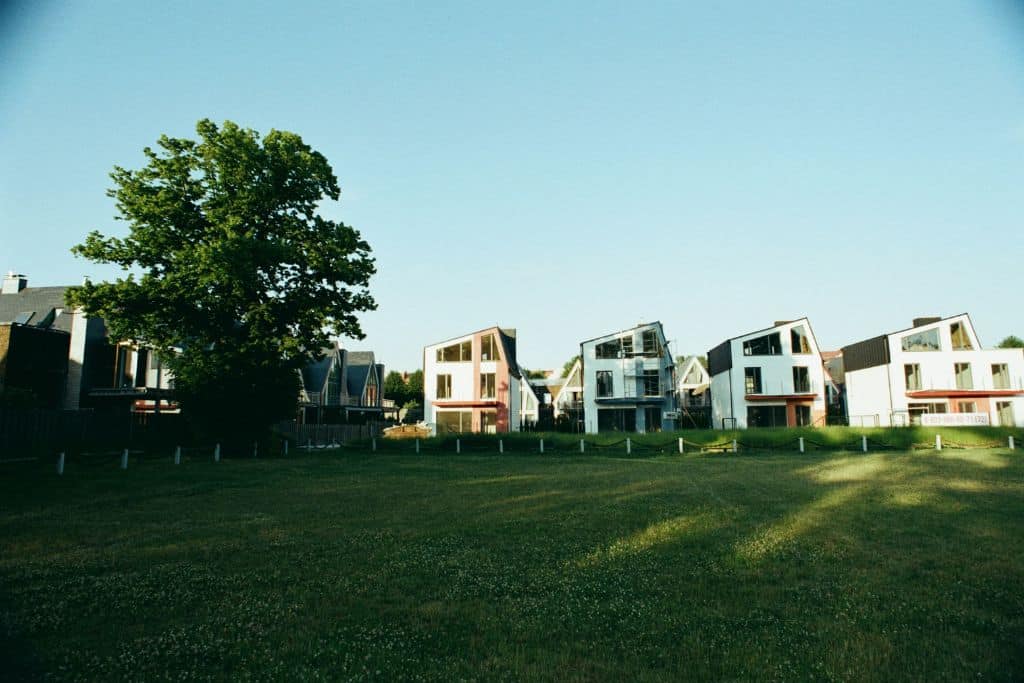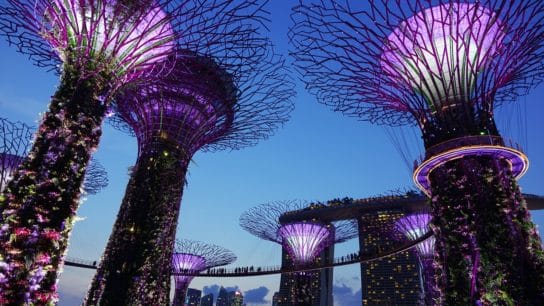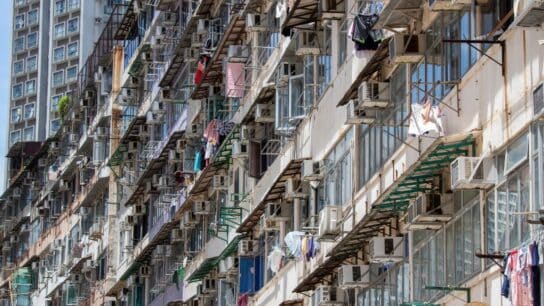In an ever-changing world where consumerism and mass production define the majority of the societies, are examples of the tragedy of the commons. Many countries are facing several environmental problems, such as outdoor air pollution, plastic pollution, and food waste. Ecovillages, on the other hand, provide promise for sustainable living in the face of increasing urbanisation. This article examines ecovillages from across the globe where people live as a community with a laid-back approach practising eco-friendly lifestyle.
—
What Is an Ecovillage?
There is no one-size-fits-all definition of an ecovillage since each community has a distinct vision, mission, culture, environment, and interest. The Global Ecovillage Network (GEN) defines ecovillage as an intentional, traditional or urban community that aims to become socially, culturally, ecologically, and economically sustainable using locally owned participatory processes. Ecovillages aim to minimise the environmental and social impacts, and influence others through their model and collaboration.
Generally speaking, traditional ecovillages are existing rural villages and communities that have decided to determine their own future path by combining life-sustaining traditional wisdom with positive new innovation through participatory methods, whereas intentional ecovillages are formed when individuals with the same goal or vision bond together.
The GEN was founded in 1995 by 25 community representatives from around the world to establish a solid international network of ecovillage communities and to reach out to policymakers, NGOs, academics, and governments.
At present, there are over 1,100 villages worldwide. These dwellings consist of a population size of 50-350 people living in a sustainable environment. The primary motive of this lifestyle is to seek alternatives to modern lifestyles, including a secure environment, better childcare facilities, improved services, communal enjoyment, environmental preservation, urban sprawl reduction, and local economic development. Depending on an individual’s motivation and the community’s objectives, one may be admitted or rejected.
You might also like: 5 Ways to Live a More Sustainable Life
Ecovillages Around the World
The following are the 5 interesting ecovillages from around the world listed by the World Economic Forum.
1) Findhorn Ecovillage, Scotland
Since its establishment in 1985 in Moray, Scotland, Findhorn Ecovillage has become the oldest and most well-known intentional ecovillage in the world. Its founders, who were involved in the GEN, became pioneers of the ecovillage movement.
The “living laboratory” ecovillage, which was designated the “Best Practice Design” as a model for holistic and sustainable living by the United Nations Centre for Human Settlements in 1998, is inspired by the concept of a locally-engaged and low-carbon lifestyle, emphasising the connections between the social, spiritual, economic, and ecological aspects of life. Owing to the unique model where all required things are within a 20-minute walk, this Scottish ecovillage produces one of the lowest ecological footprints of any community in the developed world, nearly half of the UK average. According to a 2006 report, the total Findhorn Ecovillage ecological footprint was 3.86 global hectares (gha) per person, whereas the UK’s was 5.4 global hectares (gha) per person.

Sustainable architecture is at the forefront of Findhorn’s ecological conscience. For instance, buildings have passive solar features, breathing walls which allow controllable flow of air and vapour, efficient heating systems and insulation, water conserving technology, and are built with sustainable materials, such as natural clay and recycled car tires. It also has a biological wastewater treatment plant – the so-called “living machine” – which treats the sewage of up to 500 people living in the community, and people drive zero-emissions electric vehicles. Four community-owned wind turbines supply more than enough the energy needed by the community.
Findhorn provides programmes to raise awareness about sustainability among visitors and the public, such as offering permaculture design certificate courses and ecovillage experience weeks. It also hosts the Findhorn International Forum on Sustainability, which allows participants to interact with representatives from businesses, NGOs, social enterprises and organisations, empowering them to generate new perspectives on existing environmental challenges.
2) Eco Truly Park, Peru
Located on the Peruvian Pacific coast, Eco Truly Park is a renowned ecovillage consisting of 18 conical houses. Its members live in artistic, self-sustaining, and spiritual ways, inspired by the Indian Vaishnava practice of living a healthy, yogic, simple and thoughtful life. Caring for the land is the cornerstone of daily health and vegetarian food is the main diet, as the community emphasises its impact on the health and environment.
Eco Truly Park hosts tours, workshops and volunteer programs where participants can learn about organic farming techniques, harvest vegetarian food, and can take art, yoga, and philosophy classes that teach them principles of non-violence and respect for nature. More than 75,000 visitors have come since its opening in 1994.

3) The Farm, Tennessee, United States
Stephen Gaskin, a Marine combat veteran and hippie guru, as described by the New York Times, founded The Farm Community in 1971 in Tennessee along with 300 spiritual seekers. Established on the ground of nonviolent values, vegetarianism, and environmental stewardship, it is the oldest intentional ecovillage in the US and currently counts around 200 members and residents.
The Farm follows eco-friendly practices including sustainable farming, composting, and green energy. Community building is prioritised when it comes to making a positive impact through collaboration and harmony. The ecovillage offers a number of well-known services, such as midwifery centres with workshops, an international development and relief nonprofit, and the Swan Conservation Trust.
It also has the Ecovillage Training Center, started in 1994 to teach students about permaculture, organic certification professions, green building, renewable energy, installing solar electricity and water heating, and other lessons of eco-living.
4) Crystal Waters Eco Village, Australia
Started in 1987 as the first intentional permaculture village in the world, today Crystal Waters Eco Village has 250 residents from different backgrounds. The 640-acre bushland – recognised as “Land for Wildlife” – is home to dozens of birds, kangaroos, frogs, and wallabies. Residents occupy 20% of the land, while the remaining 80% is available to be licensed for agricultural, forestry, recreation, and habitat projects.
This ecovillage is inspired by values of clean air, water and soil; the freedom of spiritual belief; meaningful social interaction among their members; and safe and healthy accommodation. It is also based on permaculture, a concept established by Bill Mollison, which in his book “Introduction to Permaculture” defines it as interacting with nature, observing plants and animals holistically, and treating each area as a whole system rather than a single product.
Some examples of permaculture incorporated at Crystal Waters Eco Village include maintaining the quality and quantity of water downstream, efficient use of multi-functional dams (emergency water, a flood mitigation strategy, etc), widespread use of recycle and reuse practices and of environmentally-friendly building materials, and effective use of land (accommodation, agriculture, forestry, etc). They also provide a permaculture school where participants can learn technical skills as well as the theory behind permaculture.
5) EcoVillage, New York, United States
Founded in 1991 in Ithaca, New York, the EcoVillage is part of an international coalition aiming to strive innovative responses to social, environmental, and economic problems. Nowadays, the ecovillage is one of the biggest co-housing communities in the world, with 170 adults and 40 children across 3 neighbourhoods: Frog, Song, and Tree.
The buildings are built with passive solar design for natural heating and cooling, and some have photovoltaic panels for solar power.The Tree neighbourhood is designed using passive house principles, meaning houses have large, South-facing windows that heat up the environment easily through the natural daylight, whereas windows are kept at minimum in the North side to keep frigid winds at bay. These houses are highly insulated, with tight air-sealing and thick walls.
This village follows a co-housing model of community-oriented living, with automobiles parked outside the neighbourhood, paths connecting residences, and communal spaces utilised for community meals, play areas, and classes. Organic farms on site provide fruits and vegetables to its members. A 2014 research found that the village ecological footprint is 70% lower than average Americans.
EcoVillage also provides an education program called Thrive. It offers interested individuals a wide range of learning opportunities on sustainable living, such as in-person tours of green building as well as workshops on green energy, environmentally friendly food and farming, land conservation. It also offers online programs such as talks on sustainability and mindfulness by village residents and conscious communication workshops.
Visitors can also engage in forest bathing walks, which have both physical and mental health benefits and are found to be effective in lowering blood pressure, boosting creativity, improving eye problems caused by the prolonged use of electronic gadgets as well as improving mental well-being.
More on the topic: The Healing Power of Forest Bathing, Nature’s Remedy for Stress and Mental Well-Being
Conclusion
Amidst the hustle and bustle of city life, learning about different ecovillages from different countries give us hope for a more sustainable and livable future. These communities try to balance between economic development, environmental protection, and social well-being. The model can be a lesson for many countries since all four aspects, social, cultural, ecological, and economic are taken into consideration to promote environmental protection, social cohesion, and individual well-being.
Changing the world takes everyone’s cooperation, understanding, and efforts to preserve nature while focusing on present development, without jeopardising future generations’ ability to meet their own. After all, this is sustainable development.
Featured image: Tony Basso/Unsplash
This story is funded by readers like you
Our non-profit newsroom provides climate coverage free of charge and advertising. Your one-off or monthly donations play a crucial role in supporting our operations, expanding our reach, and maintaining our editorial independence.
About EO | Mission Statement | Impact & Reach | Write for us














